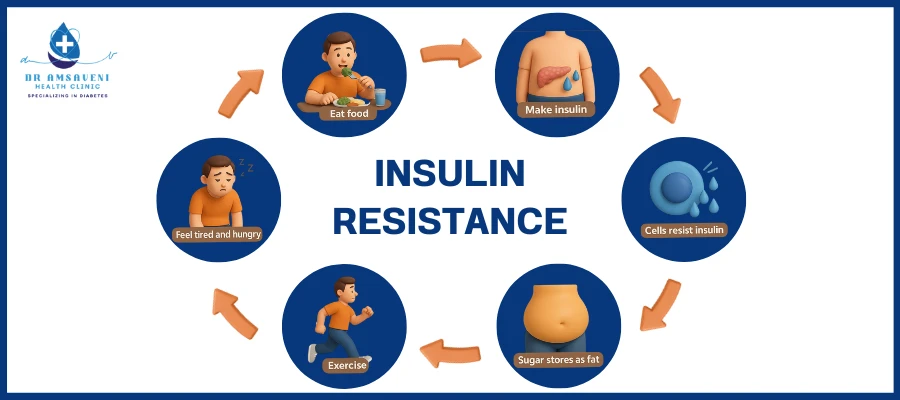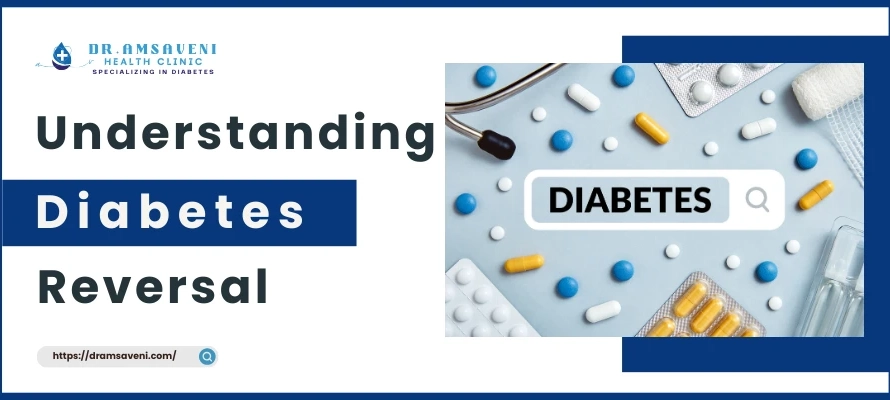What is Insulin for Diabetes and How Insulin Works?
Insulin is a hormone produced by the pancreas that regulates blood glucose levels by facilitating cellular glucose uptake. In diabetes patients, insulin levels vary: Type 1 diabetes involves insufficient production, while Type 2 features insulin resistance. Normal insulin levels are crucial for managing blood sugar.
Determining when an insulin pen is needed depends on a person’s blood glucose levels and type of diabetes. While the exact thresholds can vary based on individual medical advice, here’s a general guideline table for fasting and postprandial (after meals) blood sugar levels that might indicate a need for regular insulin therapy and how insulin works.
| Blood Sugar Level | Condition | Recommendation |
|---|---|---|
| Fasting ≥ 130 mg/dL | High fasting level | Consider insulin treatment if persistent |
| Postprandial ≥ 180 mg/dL | Elevated after meals | Insulin may be needed for control |
| HbA1c > 7% | Long-term control | Insulin therapy considered |
If postprandial blood sugar is greater than 180 mg/dL, it indicates elevated levels after meals. This may result from excess glycogen storage due to high carbohydrate intake. Monitoring and adjusting your diet can help manage these levels and improve overall metabolic health.
If postprandial blood sugar levels exceed 180 mg/dL, a sudden and effective way to bring them down is by using an insulin pen. Regular Insulin helps facilitate glucose uptake by cells, lowering blood sugar levels quickly. However, it’s essential to use insulin under medical guidance to ensure proper dosing and avoid hypoglycemia. Always consult a healthcare professional before making changes to your insulin regimen.
How to Increase Insulin Function Naturally From Insulin Resistance?
In a cozy little home, the day began with a warm breakfast of chapatis, followed by a hearty rice lunch, and finished with more chapati for dinner. As these meals were enjoyed, it was noticed that carbohydrate intake was much higher than other nutrients. Knowing that excess carbohydrates could lead to insulin resistance, a decision was made to take charge of health. With a goal to maintain balanced blood sugar levels, it was realized that the diet needed adjustment, incorporating more variety by adding protein-rich foods and colorful vegetables.
The following day, a determined effort was made to change. A more rigorous exercise routine was dedicated to, with a morning run in the nearby park and resistance training later in the day. As these exercises were done, visualization occurred of the body burning through glycogen stored in the liver and muscles, allowing proper insulin function to be maintained. By embracing a balanced diet with less emphasis on carbohydrates and committing to regular exercise, empowerment was felt in taking control of health, ensuring the ability to thrive without heavy dependence on insulin function.

What Balanced Diet for Insulin Sensitivity?
Note that these percentages are general estimates based on research and may vary based on individual health status and dietary context.
| Nutrient | Sources | Estimated Impact on Insulin Sensitivity (%) |
|---|---|---|
| Fiber | Whole grains, fruits, legumes | 15-30% |
| Omega-3 Fatty Acids | Fatty fish, flaxseeds, walnuts | 10-25% |
| Magnesium | Leafy greens, nuts, seeds | 10-20% |
| Protein | Lean meats, dairy, legumes | 5-15% |
| Antioxidants | Berries, nuts, dark chocolate | 5-15% |
| Vitamin D | Fortified foods, sunlight | 5-10% |
| Chromium |
Whole grains, broccoli, liver
|
5-10% |
How to Exercise for Insulin Sensitivity Naturally?
Various types of exercises that can help increase insulin sensitivity by effectively burning excess nutrients, along with their approximate contributions in percentage to improving insulin sensitivity. These are general estimates based on research and can vary by individual.
- The percentages are approximate and represent the potential contribution of each exercise type to improving insulin sensitivity and metabolic health when performed regularly.
- Individual results may vary based on fitness level, overall health, diet, and consistency in exercising.
- Always consult a healthcare professional or fitness expert for personalized exercise recommendations.
| Exercise Type | Description | Estimated Impact on Insulin Sensitivity (%) |
|---|---|---|
| Aerobic Exercise | Activities like running, cycling, or swimming | 20-40% |
| Resistance Training | Weight lifting or bodyweight exercises | 15-30% |
| High-Intensity Interval Training (HIIT) | Short bursts of intense activity followed by rest | 25-50% |
| Walking | Moderate-paced walking for 30 minutes or more | 10-20% |
| Flexibility Exercises | Yoga and stretching | 5-15% |
| Sports Activities | Team sports like basketball or soccer | 15-30% |
How to Increase Insulin Sensitivity Practically? – Dr Amsaveni Health Clinic
Increasing insulin sensitivity is essential for everyone, but we often face challenges in maintaining a consistent routine. At Dr Amsaveni Health Clinic, under the guidance of Dr Amsaveni, we understand that while the above plans and percentages for improving insulin sensitivity can be inspiring, implementing them into daily life is where many struggle. To address this, we have developed a convenient reminder system using WhatsApp. This innovative approach allows us to send you regular prompts about your dietary choices and daily exercise routines, making it easier to stay engaged and committed to your health goals.
In addition to diet and exercise, it’s crucial to avoid harmful habits such as junk food, alcohol, smoking, and fast foods, as these can negatively impact your insulin sensitivity. Our dedicated team will not only remind you to adhere to your meal and exercise plans but also motivate you to make healthier lifestyle choices. By integrating these reminders into your daily routine, we aim to support you in modifying your habits for better health and well-being. Join us on this journey towards improved insulin sensitivity and overall wellness with personalized guidance from Dr. Amsaveni and our supportive team.





